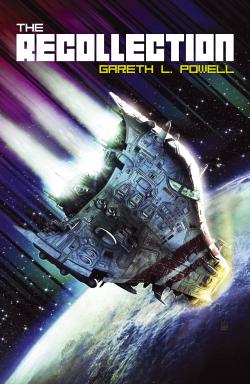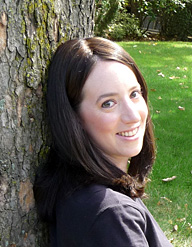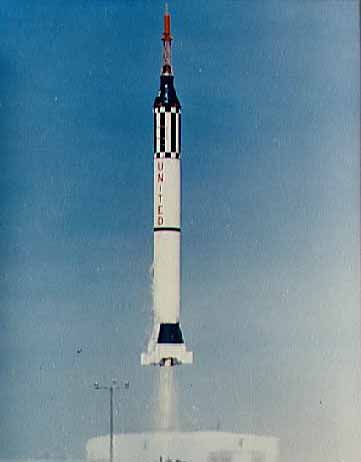Today we begin a discontinuous set of posts as part of a “blog tour” featuring fellow members of the Codex Writers online community.
Our first featured author is Gareth L. Powell, author of the novels The Recollection (forthcoming from Solaris Books) and Silversands, and the acclaimed short story collection The Last Reef. He is a regular contributor to the wonderful British SF magazine Interzone, and his work has appeared in a number of recent anthologies.
Gareth has given guest lectures on creative writing at Bath Spa University, and has written a series of non-fiction articles on science fiction for The Irish Times. In addition to Interzone, his work has been published in magazines all over the world, including: Hub, Best SF, Concept Sci-fi, Infinity Plus, Fiction, Ennea, Nowa Fantastyka, Aphelion, Quantum Muse, Byzarium, Phantastes, Bli Panika, Tank, Outshine, and Efimero.
Gareth’s short story “Ack-Ack Macaque” won the Interzone Readers’ Poll for best short story of 2007. He can be found online at www.garethlpowell.com.

(The Recollection cover art. Click to enlarge.)
Gareth’s new book, The Recollection, combines contemporary action with far-future “space opera”:
In modern-day London, failed artist Ed Rico is secretly in love with his brother’s wife, Alice. When his brother disappears on a London Underground escalator, Ed and Alice have to put aside their personal feelings in order to find him. Their quest reveals to them terrifying glimpses of alien worlds and the far future.
Meanwhile, 400 years in the future, Katherine Abdulov must travel to a remote planet in order to regain the trust of her influential family. The only person standing in her way is her former lover, Victor Luciano, the ruthless employee of a rival trading firm. And in the unforgiving depths of space, an ancient evil stirs…
I really appreciate Gareth taking the time to answer a few questions about how he took the idea for The Recollection and turned it into reality.
How long was it between first conceiving this project and actually starting to work on it in earnest?
I conceived the core idea of The Recollection in 2003, shortly after I finished writing my first book, Silversands. I wrote some plot and background notes, and then put the idea to one side. At that time, I hadn’t had anything published, and I figured it would be a lot easier to generate some interest in Silversands if I had a few magazine credits to my name; so I spent the next few years concentrating on short fiction.
I made my first sale to Interzone in 2006, and that led to the publication of my first short story collection The Last Reef in 2008. After that came out, I decided the time was right to take the lessons I’d learned from short fiction and apply them to a novel-length project; and so I dug out my old notes and started work. Along the way, Silversands was picked up by Pendragon Press and published last year.
How long did it take to complete the book? How did the stages progress, e.g., research, writing, editing, etc.?
Not long after I started writing the book, I was introduced Jon Oliver, the Editor-in-Chief of Solaris Books, at a convention. He agreed to take a look at it, so I sent him the first 50 pages and a 3000-word synopsis, on the strength of which he commissioned the novel. After that, it was simply a matter of finishing the book.
I finished the first draft at the end of October and sent it out to a handful of friends for their comments. Then, having made one or two slight changes based on their feedback, I delivered the manuscript to Jon in November.
What major obstacles did you have to overcome while working on The Recollection? How did you overcome it them?
The obstacles I had were the same as those faced by anyone with a young family, a mortgage and bills to pay. I had to squeeze my writing time between my day job and my parental responsibilities.
Luckily, I have a patient and understanding wife. With her encouragement, I took a part time job which allowed me a free day during the week to write while the kids were at school. I also wrote in the evenings after they were in bed.
I found that by trying to write every night, I soon got in a routine and the words started to flow. I didn’t worry too much about hitting a daily target; if the words came and were good, I was happy. Even if I only wrote a paragraph in an evening, I knew that the next day I might write two or three thousand words, so it all balanced out; and every sentence was a step closer to my goal.

(Gareth L. Powell. Click to enlarge.)
What was the biggest surprise you got out of working on The Recollection?
I was surprised at just how much fun this book was to write. By the time I was halfway through, I was flying along. The characters and plot had come alive, and I couldn’t wait to dive in each day and spend some more time in their company.
Most of the short fiction I’ve written has been set on Earth in the near-future, so it was great to be producing an epic widescreen space opera. As a kid, I always loved those sorts of books. I dug the hardware. So it was fantastic to have the chance to pour my love of the genre into a book of my own.
What’s your next project?
I have other novels up my sleeves. There may even be a sequel or two to The Recollection. I am also considering a second short story collection, bringing together a lot of the stories I’ve had published in magazines and anthologies over the last couple of years, since the release of The Last Reef.
___
Speaking of anthologies, Gareth’s work is featured in a number of recent anthologies, including Shine (Solaris, 2010), Conflicts (NewCon Press, 2010), Dark Spires (Wizard’s Tower, 2010), 2020 Visions (M-Brane, 2010), and Future Bristol (Swimming Kangaroo, 2009).
The Recollection will be released on September 1st, 2011, but can be pre-ordered now on Amazon.



 by
by 

















